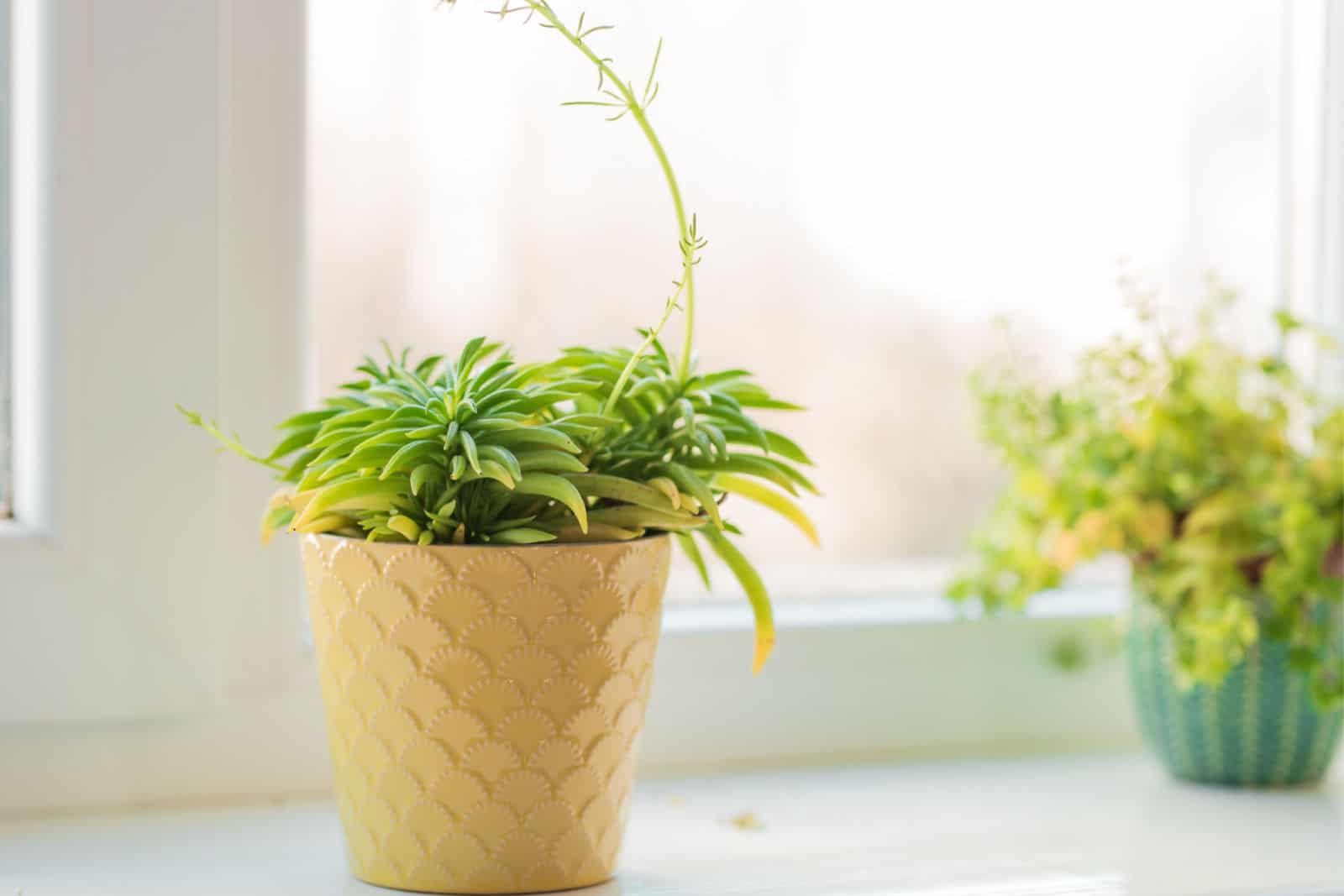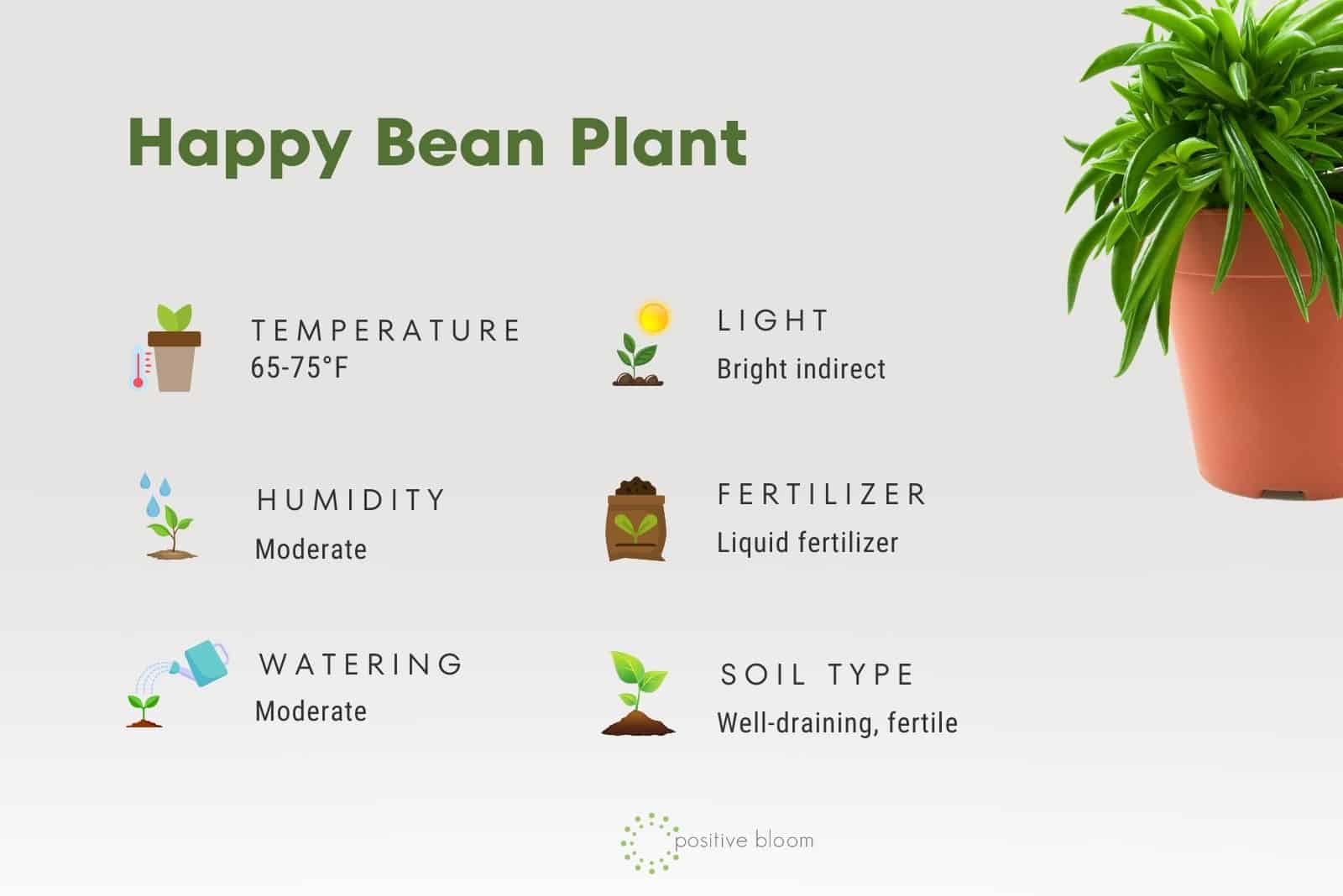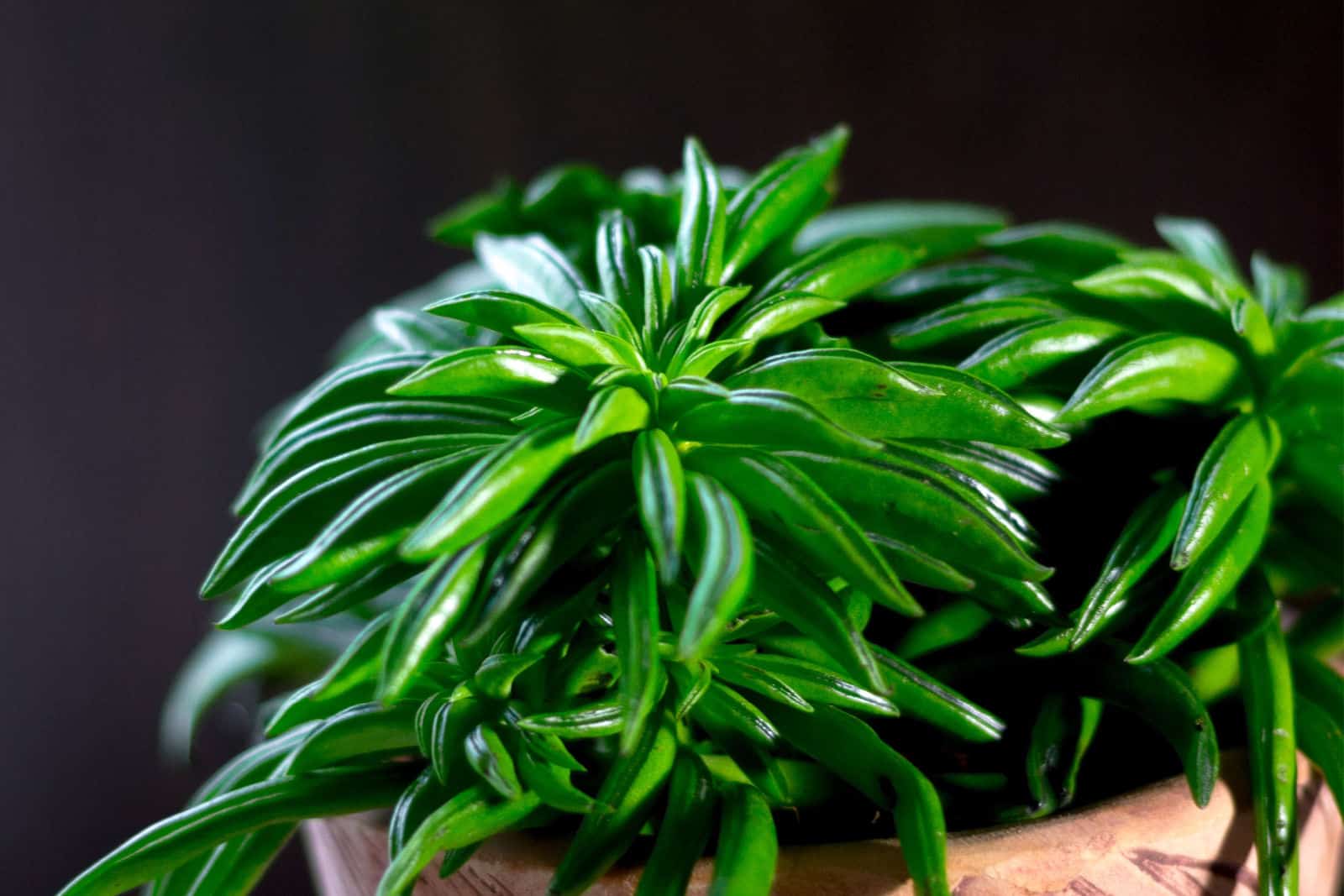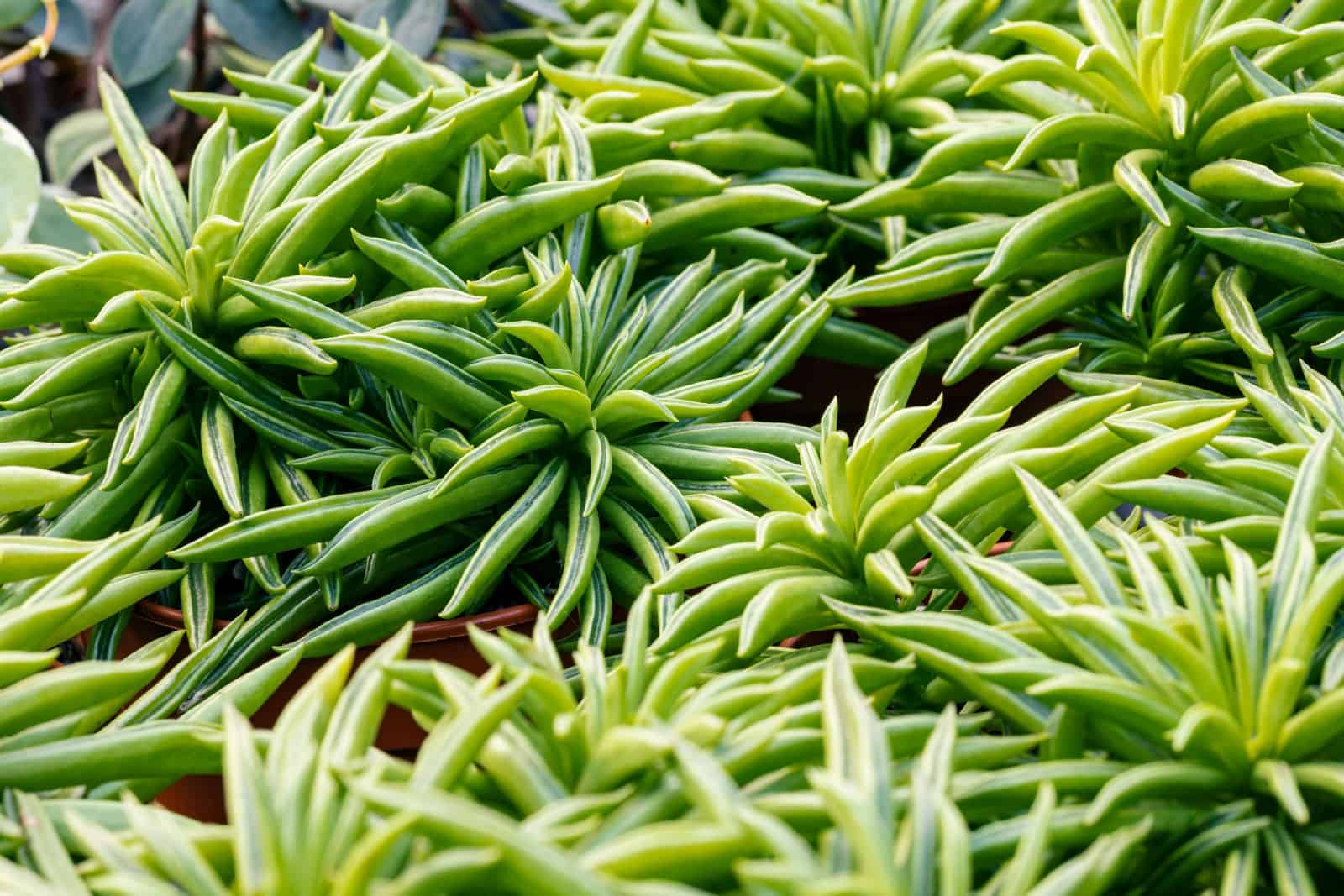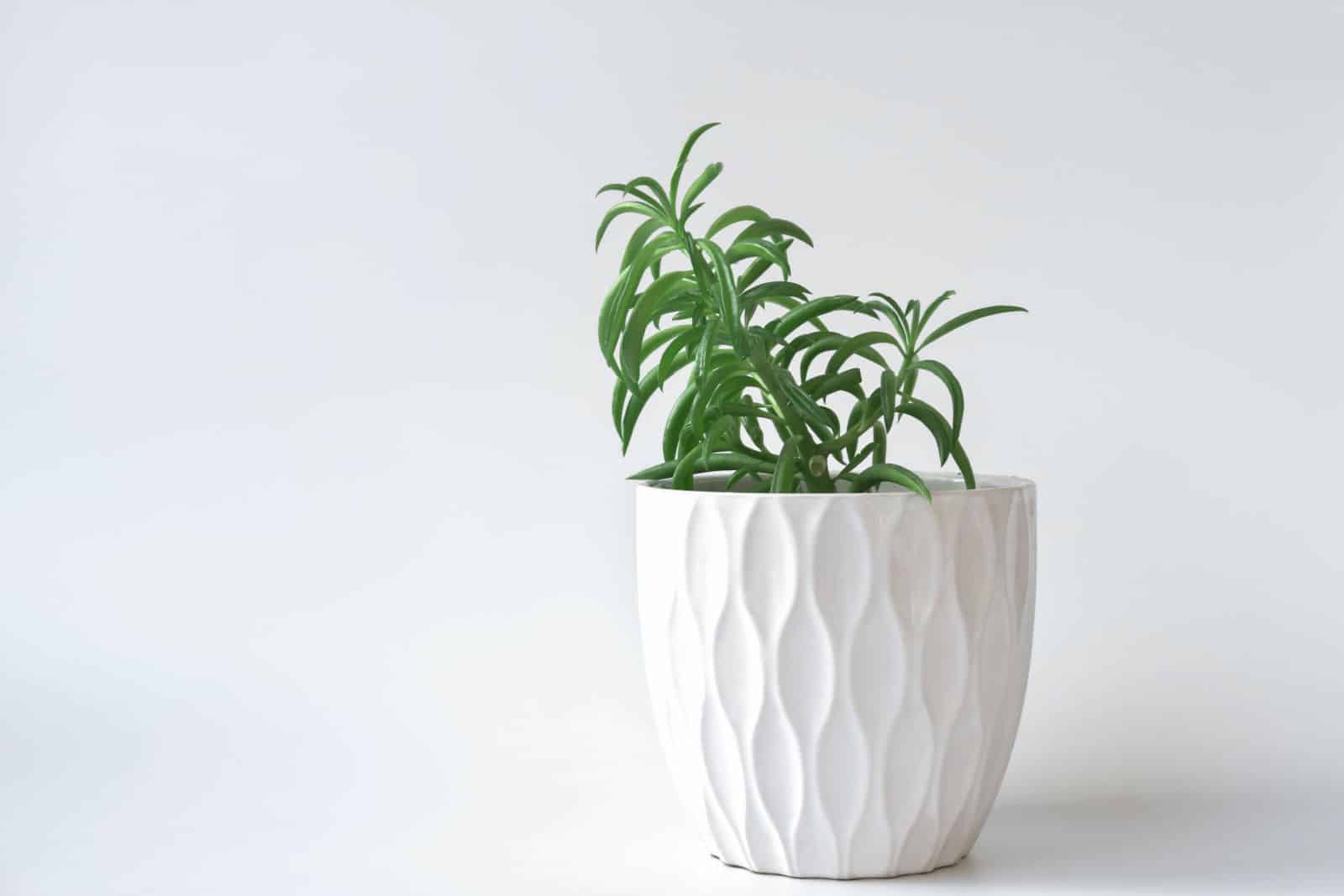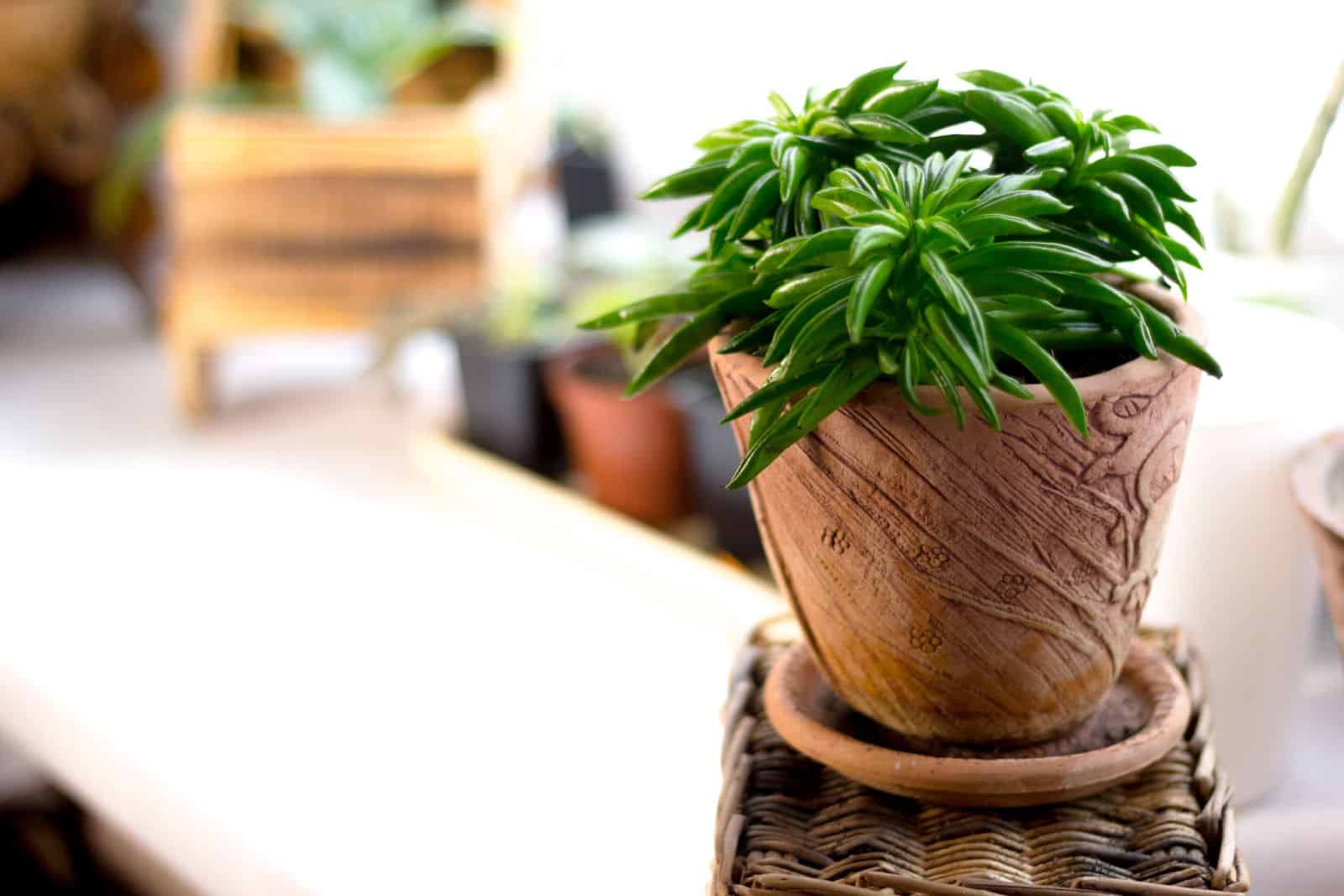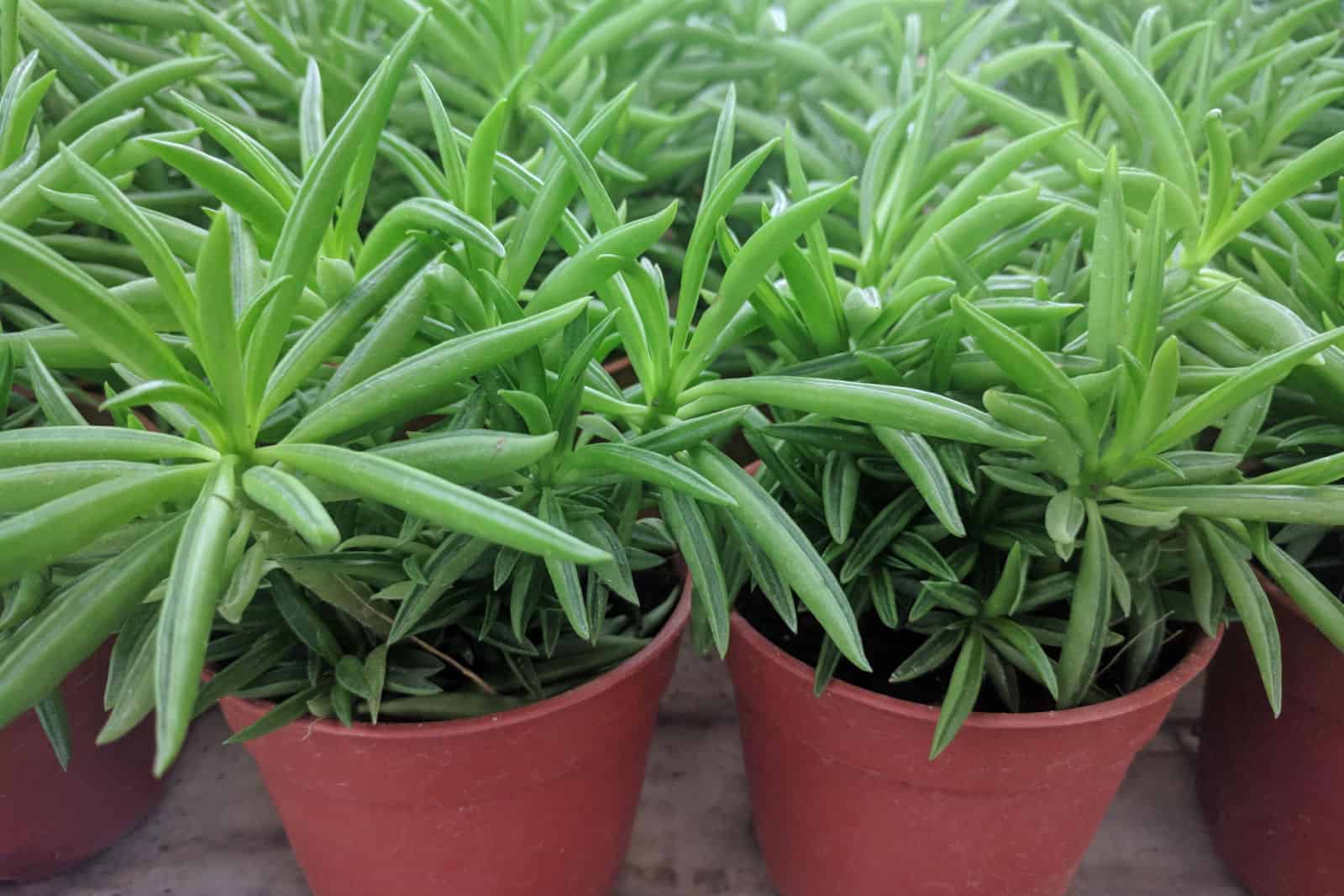Most houseplants can make your home look more lively, but some might even bring you joy!
Meet the Peperomia ferreyrae, also known as the Happy bean plant. This lovely, succulent-like plant has unique-looking leaves that resemble beans, hence the name. It stays relatively small, which is why it is the perfect plant for desks and shelves.
Peperomia plants are generally easy to take care of, and the same thing applies to this little cutie. All you have to do is provide it with bright indirect light, well-draining soil, a bit of fertilizer, and some watering.
Keep reading to find more information about its plant care, as well as some common issues that you may encounter.
Here’s some basic info to kick things off:
[table id=664 /]
Happy Bean Plant: Common Features
The Pincushion peperomia, otherwise known as the Happy bean plant or Peperomia ferreyrae, is a peperomia variety that originates from beautiful regions of South America, though nowadays you can grow it in the comfort of your own home!
This compact plant produces narrow green and pointy leaves that look like pea pods. Trust me, your guests will be wondering what type of beans you are growing in little pots on your windowsill.
The top of the leaf has a dark stripe that is actually a translucent window through which light enters the green cell – these cells are necessary for photosynthesis and energy production.
Its semi-succulent stems grow upright, but the plant has a bushy appearance. As it matures, it might appear lanky. Regular stem pruning will keep it looking neat and encourage a more compact form.
This perennial epiphytic plant belongs to the Piperaceae family. You have probably already heard of other popular peperomias such as the Peperomia rotundifolia and Peperomia ginny.
Although most Peperomia varieties grow quite tall, this little bean stays under 1 feet tall and wide. Therefore, it is a perfect plant for desks, bookshelves, and narrow window sills.
This plant is not considered poisonous. Still, you shouldn’t eat the leaves even though they look like delicious beans!
How To Take Care Of The Happy Bean Plant
Peperomia plant care is relatively simple for all peperomias, which means that it doesn’t take much to keep your Happy bean plant healthy!
Be careful with watering, ensure that it has enough light and humidity, and keep it somewhere nice and warm. Always be on the lookout for pesky pests that can infest your little beans.
Let’s look closer.
Light Requirement
The tall trees in tropical rainforests provide sun protection for small peperomia varieties. This means that these little ones are not exposed to direct sunlight per se, but rather to indirect sunlight. You must imitate rainforest conditions if you want a healthy indoor plant.
The first thing to avoid is exposing your plant to direct sunlight because it can burn those little pea-shaped leaves!
The optimal location for your plant is next to an east- or north-facing window so that it can receive all the sunlight it needs without getting burned.
If you don’t have enough space, the plant can also be positioned in rooms with a western or southern exposure, but keep in mind that you should move the plant away from windows during the day because too much afternoon sun can be fatal.
To conclude, bright indirect light is ideal for your Peperomia ferreyrae. Invest in some grow lights if you can’t find the perfect spot for it.
Soil Requirements
These plants are epiphytes, which means that they don’t usually grow in the ground, but rather on other plants and trees. This is why it can be tricky to get the right growing substrate. Good drainage, the right pH level, and all the required nutrients are three components that potting soil mix must possess.
These plants thrive in nutrient-rich and well-draining soil. Therefore, soil additives such as perlite or peat moss must be added. I usually combine one part perlite and one part peat moss for my Peperomia serpens, though you can also include orchid bark, coco coir, or grit.
What also must be taken into consideration is the soil pH. The ideal pH ranges from 5.0 to 7.0, or slightly acidic to neutral.
Water Requirements
The Happy bean plant doesn’t need a lot of watering. Its succulent-like leaves can hold a lot of moisture, which is why this plant only needs to be watered every 7-10 days. However, this can vary based on other factors, such as humidity and temperature.
There are specific signs that your plant needs water – the soil is the primary indicator. You can water your plant right away if the top of the potting soil is dry, but if it isn’t, you should wait a few days.
Naturally, this plant needs more moisture during the growing season than it does during dormancy, so you can cut back on the frequency of watering by half in the late fall or whenever your little bean stops sprouting new leaves.
What’s also important to note is that these plants are easily overwatered, which leads to a number of different issues that can be fatal. In addition to well-draining soil, growing your plant in a pot with drainage holes in the bottom is a must.
Humidity Requirements
You probably already know that tropical regions are rather humid, which is why tropical plants like peperomias thrive in higher humidity. Still, they aren’t too fussy about humidity and can grow perfectly fine in moderate humidity conditions.
Since they can store a lot of moisture in their leaves, the best humidity range for them is between 40% and 50%.
The best way to improve humidity is by buying a humidifier, creating a pebble tray, putting the plant in a more humid room, or misting it regularly.
Temperature Requirements
In addition to high humidity, tropical regions are also relatively warm. So, in order to keep your bean plant happy, make sure to put it somewhere nice and cozy. The best temperatures range from 65 to 75 degrees Fahrenheit, though they can tolerate temperatures as low as 50 degrees Fahrenheit.
Bring your plant indoors if the weather gets cold in the region where you live since they are not frost tolerant. This also means that throughout the winter you should keep your plant away from open windows and chilly drafts, as well as from vents and air conditioners.
Keep them away from other heat sources as well, such as radiators and fireplaces, otherwise you will end up with roasted beans!
Fertilizer Requirements
Since peperomias often don’t need a lot of fertilizer to thrive, you should be careful about the type of fertilizer that you are using and also the amount that you are applying.
In order to reduce the risk of overfertilization, it is generally recommended to fertilize your Happy bean plant only during the growing season.
If you choose a slow-release type, you will only need to fertilize your plant 1-2 times a year, depending on the product, and you won’t need to feed it more than once a month with a liquid fertilizer.
To make the nutrients available and prevent fertilizer burn on the roots, use a well-balanced all-purpose fertilizer and always water your peperomia after feeding it.
Don’t fertilize the plant during the winter months as they enter dormancy. This would do more harm than good!
Pruning
This plant grows vigorously and can end up wild-looking. Therefore, if you want to keep your plant in shape, you must prune it. Although your Happy bean plant might not be so happy with you cutting its leaves and stems, it will only encourage new growth and make it look nicer!
All you have to do is remove any damaged leaves and pinch out the stem tips. They are usually pruned at the beginning of the growing season. Always use a sterile knife or pruning shears when pruning.
Repotting
There are two reasons for repotting your Happy bean plant: nutrient depletion and crowded space. If you have used the same soil for more than one season, the minerals and nutrients are most likely depleted. This type of soil can easily get waterlogged.
Another reason is if your plant has outgrown its current pot – you can tell if the roots are protruding from the soil and drainage holes.
The best time to repot this plant is in early spring at the beginning of the growing season. This way, your plant will have enough time to adjust to its new environment and still produce new leaves.
Remove it from its container, fill the new pot with potting soil, plant your peperomia, and then cover it with additional soil.
Take it back to its regular location after giving it a thorough watering (until you see water dripping from the drainage holes).
Propagation
The best propagation method for peperomia plants is definitely by using stem cuttings. This is how I propagated my Peperomia nivalis a couple of times, and I used the baby plants as gifts.
You can choose to put the cutting in water or soil.
Here’s how you do it:
Water Propagation
Water propagation is a relatively easy and safe way to propagate your plants. Prior to propagation, you must first carefully water the plant to minimize shock to the mother plant, and also to ensure that the propagation goes smoothly.
The next day, choose a healthy stem that is suitable for propagation, cut it as near to the base as you can, and cut off all of the bottom leaves.
The stem should be placed in a glass container with water and moved to a sunny area where it can receive all the filtered sunlight it needs.
It’s time to place your baby peperomia into its new location once the roots begin to show. Put a fresh plant in the nursery planter first, and then follow the regular plant care guide.
Soil Propagation
Similarly to water propagation, soil propagation begins with watering the plant and then removing the stem — select a healthy stem and cut it just above the base.
After that, place it in a nursery tray or a pot after dipping it in rooting hormone rather than placing it immediately in water (as described above). To maintain high humidity levels and make sure the medium is consistently moist, place a plastic bag over the cutting.
Until the root system forms, keep your peperomia cutting warm and in bright sunlight. Keep an eye on the plant, and whenever you see new growth you’ll know it has also developed roots. Once it establishes roots, transplant it into a bigger pot.
If you want to know more about Happy bean plant propagation, check out this video:
Happy Bean Plant: Common Problems
If you end up with a pest infestation or fungal infection, your Happy bean plant will become a Sad bean plant. Although these succulent-like plants are relatively hardy, unhealthy plants might lead to several issues.
We have already mentioned overwatering, which is often accompanied by root rot. However, underwatering is also a common issue that leads to wilting and stunted growth.
Pest Infestation
Aphids, mealybugs, spider mites, and whiteflies are the most frequent pests that attack this plant. Signs of pest infestation include yellow leaves, discolored leaves with brown patches, or tiny webbing on the plant (in case of a spider mite infestation).
If the infestation isn’t severe, you can pluck them off by hand or remove them one at a time using a cotton swab dipped in rubbing alcohol.
Additionally, you can use insecticides like horticultural oils and insecticidal soaps if there are too many bugs to handle.
Plant Diseases
We already mentioned root rot as the most common disease that affects tropical plants. Excess moisture and soggy soil attracts fungus that causes root rot. Yellow leaves and smelly soil are the signs of this disease.
If you observe these signs and think that your plant might be suffering from root rot, the first thing that you should do is examine the roots. See if there are any black, mushy, or rotting roots. If so, repotting the plant is your only way out.
When repotting, trim off those affected roots and put your plant in fresh soil that isn’t contaminated with fungus.
Another common disease is leaf spot. The dark lesions that appear on your peperomia leaves are caused by leaf spot, which is brought on by consistently moist leaves. If you always water your plant at the base, you won’t have to worry about this problem.
Simply remove and dispose of the diseased foliage – just don’t add it to your compost pile because it might spread the fungus!
Inadequate Plant Care
Yellowing leaves aren’t caused solely by pests and diseases. In fact, most of the time the real reason is actually inadequate plant care.
Yellow leaves can result from a nitrogen deficiency, so fertilize your peperomias frequently. Lack of sunlight can lead to leaf discoloration and drooping. The process of photosynthesis is hampered because a plant kept in excessive shade is unable to produce enough chlorophyll, which is what gives it its distinctive green hue.
However, too much light might result in crispy and browning leaves, so you should strike a balance and give your plant exposure to bright indirect light.
Sudden temperature changes can lead to leaves falling off.
Ultimately, the best advice that I can give is to simply follow the plant care guide – trust me, you will avoid all of these issues. Preventative maintenance is the best!
Wrapping Up
The Happy bean plant is a must have plant for all plant owners – it will keep you cheery even if you are going through a rough patch. I mean, it is not called happy for no reason!
If you have already grown peperomias, then you won’t have much issue with growing this little cutie. However, if you are a beginner gardener, then simply follow the plant care instructions above; it has all the information you need.
After your plant is mature enough, you should try and propagate it because the only thing that is better than a Happy bean plant are two Happy bean plants!
That’s all, folks. I hope this article was helpful.
Until next time!

